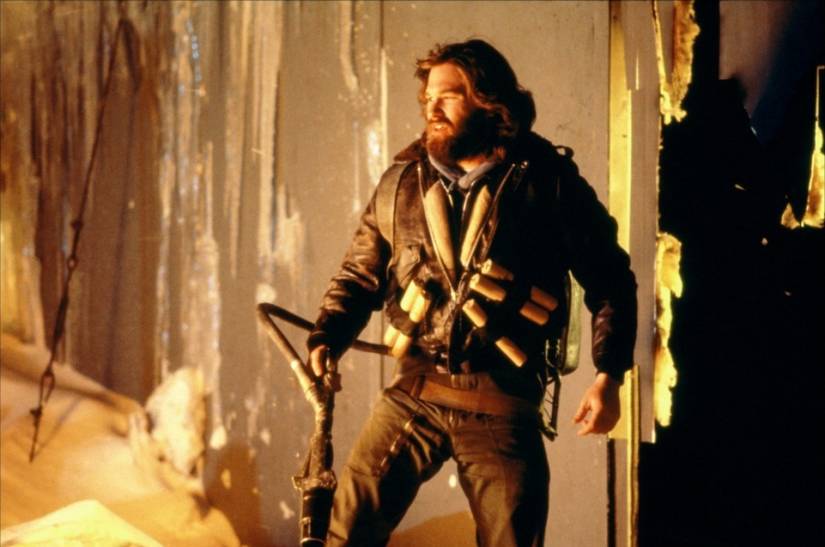
In the unpredictable world of Hollywood, a film’s initial theatrical run is often seen as its make-or-break moment. Blockbusters are born, careers are launched, and legacies are cemented in those crucial opening weekends. Yet, as any seasoned film fan knows, the box office ledger rarely tells the full story of a movie’s true worth or its eventual place in the cultural pantheon. There’s a fascinating, often heartbreaking, narrative woven into the fabric of cinema history about films that arrived with a whimper, only to evolve into roaring cultural touchstones years, or even decades, later.
We’re talking about the ‘box office bombs’—those cinematic endeavors that failed to connect with mainstream audiences, often losing studios millions, and sometimes even sending directors into a depressive spiral. But here’s the twist: many of these financial disappointments weren’t actually bad movies. Far from it. They were often too ahead of their time, too unconventional, or simply victims of terrible marketing or ill-timed releases. What they all share is a remarkable second life, finding their devoted fans through word-of-mouth, home video, and persistent re-evaluation.
So, prepare to dive deep into the curious case of films that defied their humble beginnings. We’ll explore the initial stumbles, the critical misfires, and the marketing blunders that doomed these movies in their original theatrical runs, only to witness their triumphant resurrection as beloved cult classics. This isn’t just a list; it’s a narrative journey through cinematic redemption, celebrating the power of an informed audience to reclaim and redefine what truly constitutes a masterpiece.

1. **Blade Runner (1982)**“Blade Runner” has certainly had a storied history, and its journey from box office disappointment to science fiction masterpiece is one for the ages. Upon its initial release in 1982, the film received a polarized response, with some critics praising its intricate themes and visuals, while others criticized its unusual narrative. This wasn’t the conventional action/sci-fi thrill ride audiences were expecting, and its slow pace and complex ideas often threw off mainstream viewers who were looking for something more straightforward.
Compounding its troubles, “Blade Runner” had the unenviable task of competing with a flurry of other major blockbusters released around the same time. Films like “E.T. the Extra-Terrestrial,” “Star Trek II: Wrath of Khan,” and “Conan the Barbarian” were all vying for audience attention, making it incredibly difficult for Ridley Scott’s unique vision to carve out a niche. The result was a disappointing box office performance, grossing only about $26 million against a $28 million budget, a clear financial loss for the studio.
However, the story didn’t end there. “Blade Runner” saw greater success on home video, and its numerous re-edits over the years have garnered greater critical appreciation from both critics and audiences. It’s now widely considered to be one of the greatest science fiction movies of all time, celebrated for its artistic depth and thought-provoking themes. Its popularity inspired the 2017 sequel “Blade Runner: 2049,” the 2021 animated series “Blade Runner: Black Lotus,” and the upcoming live-action series “Blade Runner 2099,” solidifying its enduring legacy.

2. **Willy Wonka & the Chocolate Factory (1971)**It’s almost impossible to believe now, but the bizarrely charming “Willy Wonka & the Chocolate Factory” wasn’t a hit when it first came out in 1971. Despite receiving good reviews, with Roger Ebert even comparing it to “The Wizard of Oz,” it performed poorly at the box office. The film earned just $2 million during its opening weekend and quickly seemed to drop out of existence, managing only about $4 million upon its release against a $3 million budget.
Part of the problem might have been its marketing. The film was primarily marketed as a family-friendly movie, yet it contained moments that could be genuinely scary for children, such as the infamous creepy tunnel scene and the various unsettling fates of the misbehaving kids. This tonal inconsistency likely confused audiences and critics alike, failing to deliver on the expectations set by its promotional material.
Even Roald Dahl, the author of the 1964 book the film was based on, was outspoken about his dislike of the adaptation. He reportedly didn’t care for the songs, the numerous changes to the plot, or the way Willy Wonka (Gene Wilder) seemed to be elevated as the main character over Charlie Bucket (Peter Ostrum). Despite these initial hurdles, the movie became much more popular after being re-released in 1996 and finding a wider audience on home video, ensuring the Oompa Loompas didn’t have to sing “Willy Wonka” a creepy exit song. Today, it’s considered one of Gene Wilder’s most iconic roles and its popularity led to the 2005 remake “Charlie and the Chocolate Factory” and the prequel “Wonka,” set for release in December 2023.

3. **The Rocky Horror Picture Show (1975)**If there’s one movie that truly defines the term ‘cult classic,’ it’s unequivocally “The Rocky Horror Picture Show.” This unique musical science fiction horror comedy blend arrived in 1975 to a very lukewarm reception, and its initial theatrical run was a textbook example of a box office bomb. The film earned a paltry $21,245 in its opening weekend, a figure so disappointing that the studio quickly pulled it from several other locations around the country, signaling what seemed like a definitive end to its cinematic life.
However, a brilliant idea from a Fox advertising executive changed everything. He talked distributors into releasing the movie on the midnight circuit, specifically at the Waverly Theatre in New York City. Here, in the late-night hours, “Rocky Horror” found its true home and became an instant smash hit. The intimate, late-night showings fostered a party-like atmosphere, and soon, one of Waverly’s regulars, kindergarten teacher Louis Farese, started shouting improvised lines back at the screen.
This fan interactivity quickly spread, becoming a hallmark of the midnight showings that expanded to other theaters nationwide. Dedicated fans began forming “shadow-cast” performance troupes, acting out the film in costume on stage as the movie played behind them. Within a year, “Rocky Horror” transformed from a theatrical failure to a cult sensation, remaining in limited theaters for over forty years and making it the longest-running film in history. It’s a testament to the power of a dedicated fanbase and a truly unique cinematic experience.

4. **The Thing (1982)**John Carpenter’s 1982 classic, “The Thing,” is now widely considered one of the greatest horror movies of all time, renowned for its intelligence, suffocating atmosphere, and groundbreaking prosthetic effects that are still considered some of the finest in cinema history. Yet, its initial reception was a stark contrast to its eventual acclaim. Upon its release, “The Thing” was regarded as absolute trash, receiving scathing reviews for its revolting violence and relentless bleakness, which clearly didn’t sit well with critics or mainstream audiences.
The film also significantly underperformed at the box office, making only $3 million during its opening weekend and going on to gross a mere $19 million during its theatrical run against a budget of $15 million. Film fans have continuously debated the reasons for its failure, with many pointing to its depressing tone, which was perhaps too much for audiences during a summer dominated by more uplifting fare. Its ill-timed release was another major factor, debuting just two weeks after Steven Spielberg’s feel-good phenomenon “E.T. the Extra-Terrestrial” and on the very same day as Ridley Scott’s “Blade Runner,” creating an oversaturation of science fiction films that cannibalized each other’s audiences.
Despite being a definite failure for Universal Pictures initially, a disappointing theatrical run was far from the end for Carpenter’s vision. Much like his later films “Big Trouble in Little China” and “They Live,” “The Thing” would eventually find a major following among horror fans, becoming yet another cult classic on Carpenter’s impressive resumé. It’s been named among the scariest films of all time and has spawned numerous other works, including a novel, comic books, a video game, and an ill-advised 2011 prequel that had no chance of standing up to the original.

5. **Fight Club (1999)**Man, 1999 was absolutely loaded with great movies that initially bombed at the box office, and “Fight Club” stands as a prime example. This David Fincher film, based on a novel by Chuck Palahniuk, is a masterclass in examining consumerism, anarchism, and mental illness. What it’s absolutely not, despite its provocative title, is a brainless action movie. However, studio interference and a severely misguided marketing campaign by Fox ended up highlighting only the fighting aspect, leading many to believe that’s precisely what they were getting.
This misdirection led to a letdown for Fox: reviews were middling, and against a budget of $63 million, “Fight Club” only earned $37 million domestically in theaters. While international box office sales mostly made up for these losses, it was considered a significant financial disappointment. Studio executives fretted over test screenings, repeatedly bumped the release date, and ultimately tinkered with the marketing campaign against director David Fincher’s wishes, all contributing to its initial stumble.
However, as is often the case with truly boundary-pushing cinema, things changed dramatically once the movie arrived on DVD. “Fight Club” was re-evaluated, gaining a massive following and earning its place as one of the finest movies of the ‘90s. Unfortunately, this newfound success came with a hefty price, as many fans, particularly a young, male demographic, regrettably took the film’s critical examination of toxic masculinity at face value, rather than understanding its intended critique.

6. **Office Space (1999)**“Office Space” is often touted as the quintessential movie for white-collar office drones, a biting satire that perfectly captured the mundane absurdities of corporate life. It marked “Beavis & Butt-Head” creator Mike Judge’s first foray into live-action filmmaking, a process made more challenging by Fox studio executives trying to butt in on the production. Despite generating good reviews due to its accurate depiction of cubicle culture, it seems general audiences either couldn’t relate or simply didn’t care enough to show up in theaters.
Consequently, the film grossed only $12 million on a $10 million budget, barely recouping its production costs at the box office. It was a modest financial performance, certainly not the kind of breakout hit one might expect from a movie that would later achieve such widespread acclaim. The disconnect between critical praise for its sharp wit and observational humor and its lukewarm theatrical reception highlighted a fundamental misjudgment of its commercial appeal at the time.
Thankfully, the home market was an entirely different story. By 2003, “Office Space” had racked up a whopping 2.6 million in combined sales between its VHS and DVD releases, a number that has only continued to climb. It also found significant success on TV when Comedy Central began airing the movie in the early 2000s. It is now known as one of the funniest and most relatable comedies of the 90s, with its cultural relevance enduring to the point where it was even referenced in a Ted Cruz campaign ad. While we’d love a modern take, Judge currently has no plans for a sequel.



